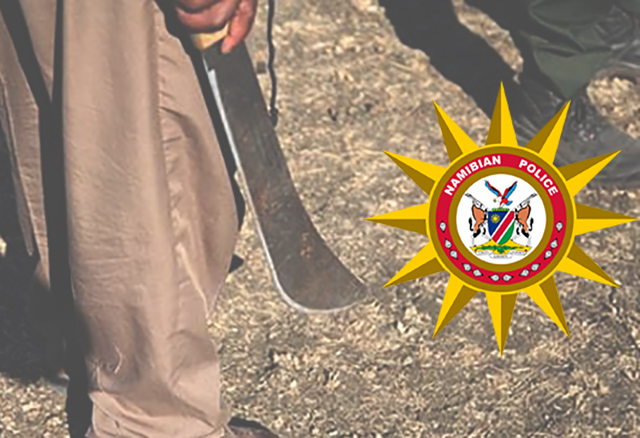FORMER combatants of Swapo’s armed wing, the People’s Liberation Army of Namibia (Plan) returned in 1989/90 as celebrated liberators.
Their existence testified to the proclaimed gospel that Namibia’s hard-won independence came through the barrel of a gun. The national anthem confirms such heroic narrative by honouring those “whose blood waters our freedom”.So does the Heroes’ Acre at the margins of the capital, though the statue of the “unknown soldier” looks less like an anonymous ordinary combatant than it resembles obvious similarities to the features of the leader who stood firm when others wavered! This illustrates the ambiguities which characterise the Swapo leadership’s relations with the former members of its armed wing during the struggle days.Throughout the 1990s they occupied at different stages the public sphere by articulating their demands, at times by means of spectacularly demonstrative acts.Only recently a group of them have resurfaced as a collective lobby group posing demands of the Party, Government and State.In contrast, the so-called former fighters – a term referring to those who fought in the ranks of the South West African Territorial Force (SWATF) and not least in the notorious Koevoet unit – have, despite the declared policy of national reconciliation, remained the true losers, without the bargaining power to articulate any demands, whether they be efficiently or morally acceptable.Namibian Independence was obtained in a negotiated process of decolonisation, which resulted in a transfer of political power.National sovereignty under a Swapo Government as a result of internationally supervised elections was at the particular moment in time in the first place an outcome of the changing international policy arena.It reflected more the emerging geo-strategic interests towards an appeasement in southern Africa at the end of the bi-polar era of the Cold War by means of controlled change, than the military successes of Plan on the battlefield (though South African weaknesses towards the late 1980s, both on the military front in Southern Angola as well as growing internal resistance, were – partly as a result of the also military dimension of the anti-colonial struggle – certainly an important contributing factor too).The heroic narrative, however, so eagerly applied and cultivated by Swapo officials in combination with the claim to be the sole and authentic representative of the Namibian people, established the exclusive authority for being the one and only liberator.This allocated initially much prominence to the returning fighters as the true heroes, but contrasted from the beginning with the disrespect shown by neglect of the numerous, who as rank and file had sacrificed their best years for the goal of liberation from the colonial yoke without any promotion: In sight of the statue of the so-called unknown soldier and next to the historical leaders, only the most prominent (read: influential) comrades are honoured by individual graves.Some of those known for their personal sacrifices during the resistance years only received due respect from the leadership of the former liberation movement once they had to be buried (elsewhere), thereby adding insult to injury.The discovery of mass graves in November 2005 brought back the memories of the April 1989 massacres committed by the South African army at the time when a ceasefire was supposed to mark the implementation of Resolution 435 as the last step towards Independence.Any efforts to deal with this tragic chapter of the recent past were stopped.In December 2005 Swapo’s President declared at a central committee meeting that no old wounds would be opened by digging up the past (a somewhat peculiar expression in this particular context).Those in disagreement with the official version of patriotic history were labelled in habitual fashion as traitors and unpatriotic elements.The most prominent dissenting voice, himself once among the returning combatants, was simply removed from his trade union position for questioning the party dogma.The punishment of such non-conformists deviating from official history resembled authoritarian tendencies of the “democratic centralism” within the erstwhile liberation movement.The intolerant political culture of the post-colonial order maintains certain principles and values, which were already alive prior to Independence.These included concepts and notions of security, modernisation and development based on unquestioned principles of social reproduction in existence as dominant paradigms already much earlier – and by no means the result of a project of human emancipation for all.In line with such control mechanisms, the ex-combatants’ image had beyond their heroic status been as much one of a social problem, endangering stability and security of the post-colonial system.Ever since Independence, the dominant reason for the State policy on ex-combatants was the declared maintenance of law and order.Their integration by means of public employment opportunities was to a large extent the result of their own protests against marginalisation from the mid-1990s onwards.Government policy tried to neutralise the potential troublemakers under a scheme, which by 1999 was propagated as Peace Project.This was guided by the rationale that employment as civil servants would pacify them and thereby justify considerable public expenditure.”Civil service” in most of the ex-combatants’ cases, however, was a mere euphemism: after all, most of them were integrated into the lower ranks of the army, the (special) Police or other security related agencies executing State power and control.Ironically, ex-combatants were entrusted with such policing tasks even while they were considered as a security risk.They were mainly defined from a paternalist administrative perspective, which viewed them as a potentially disruptive element if left on their own.Such concerns and subsequent policies are by no means genuinely Namibian.They date back to the early stages of governing poverty and marginalised groups since the beginning of the 19th century when the pauperised population of societies in transition to capitalist industrial reproduction were seen (and treated) as a threat to proper functioning of the economy and a risk to the existing (highly unequal) social order.The problem was managed within the concept of an emerging disciplinary society (a term created by the French social historian Michel Foucault), which by definition included and/or excluded, according to the values and norms applied.State interventions combined restraint and guidance under a bio-political approach to deal with the deviating segments of societies defined as having “unhealthy” or “abnormal” features.One of the latest spectacular examples of such state centrist approach in favour of the maintenance of the status quo at the expense of the marginalised has been Operation Murambatsvina (which interestingly enough translates into ‘Restore Order’) in neighbouring Zimbabwe during mid-2005 to ‘clean up’ the inner city of Harare from urban dwellers declared ‘illegal’.Namibia’s ex-combatant policy reflects the tradition of this type of social engineering, though the issue is somewhat more complicated to deal with.The status and image of ex-combatants was at Independence serving the purpose of a residual category for both sides, the Swapo Party and Government as well as the members of this group.It secured for many among the returnees a fragile existence in dependency from the office bearers representing the new authorities, who used the image of being the liberators to consolidate their legitimacy.But ex-combatants were never seen as useful and truly respected members of the new society in the making.This reflected the ambiguity and dilemma of a group caught between the aura of heroism and tragedy of failure in the post-colonial struggle for the survival of the fittest.John Matshikiza, himself a former ANC activist in exile, bemoaned on November 29 2005 the debate following the discovery of mass graves in Northern Namibia in his newspaper column ‘With the Lid Off’ in the Mail & Guardian as ‘A Grave Case of Memory Loss’.As a relative outsider he dared to state the obvious: “Who were all those guys whose skulls have just been dug up anyway? Would anybody miss them? To Geldenhuys and his faceless masters in Pretoria (some of whom were to go to win the Nobel Prize in later years) they were just so many units of vaguely menacing vermin.To the UN, far removed among the wealthy towers of New York, they were abstract black pawns in a recently abandoned East-West power game.To the liberation movement, they were troublesome mouths to feed and clothe, the voice of the people taking on a life of its own of a kind that was never intended.”The heroic narrative nevertheless provided those claiming to represent ex-combatants with a powerful tool, which offered them to “cash in” in terms of compensation for their claimed sacrifices.The (ab)use of the “war veterans” image in Zimbabwe showed that this is possible.Particular interest groups in the military and security apparatuses – by no means identical with the ordinary ex-combatants – operated with the category to negotiate special material privileges during a crucial stage of a legitimacy crisis of the Mugabe government during the late 1990s – with devastating results.Tragically, the costs for this type of social and ideological engineering had subsequently once again (as so often in class societies) to be paid by the ordinary “povo” (the people), not the leaders.As long as Namibia’s ex-combatants serve the main purpose to give credibility and legitimacy to those in political power reaping the harvest of the struggle, while having reasons to look upon themselves as the losers, the issue remains contested here too.It is as unresolved and a festering wound as the one personified by the surviving ex-detainees, who in a different (much more brutal) way were among the numerous victims of the struggle never adequately recognised.There is however one important difference: the latter have no power base to change the imposed pariah status and to overcome their social isolation.In contrast to them, the ex-combatants are a different story and the chicken may well yet come home to roost.* Dr.Henning Melber is Research Director at The Nordic Africa Institute in Uppsala, Sweden, and had been Director of The Namibian Economic Policy Research Unit (NEPRU) between 1992 and 2000.As of November, he is Executive Director of the Dag Hammarskjàld Foundation in Uppsala.The national anthem confirms such heroic narrative by honouring those “whose blood waters our freedom”.So does the Heroes’ Acre at the margins of the capital, though the statue of the “unknown soldier” looks less like an anonymous ordinary combatant than it resembles obvious similarities to the features of the leader who stood firm when others wavered! This illustrates the ambiguities which characterise the Swapo leadership’s relations with the former members of its armed wing during the struggle days.Throughout the 1990s they occupied at different stages the public sphere by articulating their demands, at times by means of spectacularly demonstrative acts.Only recently a group of them have resurfaced as a collective lobby group posing demands of the Party, Government and State.In contrast, the so-called former fighters – a term referring to those who fought in the ranks of the South West African Territorial Force (SWATF) and not least in the notorious Koevoet unit – have, despite the declared policy of national reconciliation, remained the true losers, without the bargaining power to articulate any demands, whether they be efficiently or morally acceptable.Namibian Independence was obtained in a negotiated process of decolonisation, which resulted in a transfer of political power.National sovereignty under a Swapo Government as a result of internationally supervised elections was at the particular moment in time in the first place an outcome of the changing international policy arena.It reflected more the emerging geo-strategic interests towards an appeasement in southern Africa at the end of the bi-polar era of the Cold War by means of controlled change, than the military successes of Plan on the battlefield (though South African weaknesses towards the late 1980s, both on the military front in Southern Angola as well as growing internal resistance, were – partly as a result of the also military dimension of the anti-colonial struggle – certainly an important contributing factor too).The heroic narrative, however, so eagerly applied and cultivated by Swapo officials in combination with the claim to be the sole and authentic representative of the Namibian people, established the exclusive authority for being the one and only liberator.This allocated initially much prominence to the returning fighters as the true heroes, but contrasted from the beginning with the disrespect shown by neglect of the numerous, who as rank and file had sacrificed their best years for the goal of liberation from the colonial yoke without any promotion: In sight of the statue of the so-called unknown soldier and next to the historical leaders, only the most prominent (read: influential) comrades are honoured by individual graves.Some of those known for their personal sacrifices during the resistance years only received due respect from the leadership of the former liberation movement once they had to be buried (elsewhere), thereby adding insult to injury.The discovery of mass graves in November 2005 brought back the memories of the April 1989 massacres committed by the South African army at the time when a ceasefire was supposed to mark the implementation of Resolution 435 as the last step towards Independence.Any efforts to deal with this tragic chapter of the recent past were stopped.In December 2005 Swapo’s President declared at a central committee meeting that no old wounds would be opened by digging up the past (a somewhat peculiar expression in this particular context).Those in disagreement with the official version of patriotic history were labelled in habitual fashion as traitors and unpatriotic elements.The most prominent dissenting voice, himself once among the returning combatants, was simply removed from his trade union position for questioning the party dogma.The punishment of such non-conformists deviating from official history resembled authoritarian tendencies of the “democratic centralism” within the erstwhile liberation movement.The intolerant political culture of the post-colonial order maintains certain principles and values, which were already alive prior to Independence.These included concepts and notions of security, modernisation and development based on unquestioned principles of social reproduction in existence as dominant paradigms already much earlier – and by no means the result of a project of human emancipation for all.In line with such control mechanisms, the ex-combatants’ image had beyond their heroic status been as much one of a social problem, endangering stability and security of the post-colonial system.Ever since Independence, the dominant reason for the State policy on ex-combatants was the declared maintenance of law and order.Their integration by means of public employment opportunities was to a large extent the result of their own protests against marginalisation from the mid-1990s onwards.Government policy tried to neutralise the potential troublemakers under a scheme, which by 1999 was propagated as Peace Project.This was guided by the rationale that employment as civil servants would pacify them and thereby justify considerable public expenditure.”Civil service” in most of the ex-combatants’ cases, however, was a mere euphemism: after all, most of them were integrated into the lower ranks of the army, the (special) Police or other security related agencies executing State power and control.Ironically, ex-combatants were entrusted with such policing tasks even while they were considered as a security risk.They were mainly defined from a paternalist administrative perspective, which viewed them as a potentially disruptive element if left on their own.Such concerns and subsequent policies are by no means genuinely Namibian.They date back to the early stages of governing poverty and marginalised groups since the beginning of the 19th century when the pauperised population of societies in transition to capitalist industrial reproduction were seen (and treated) as a threat to proper functioning of the economy and a risk to the existing (highly unequal) social order.The problem was managed within the concept of an emerging disciplinary society (a term created by the French social historian Michel Foucault), which by definition included and/or excluded, according to the values and norms applied.State interventions combined restraint and guidance under a bio-political approach to deal with the deviating segments of societies defined as having “unhealthy” or “abnormal” features.One of the latest spectacular examples of such state centrist approach in favour of the maintenance of the status quo at the expense of the marginalised has been Operation Murambatsvina (which interestingly enough translates into ‘Restore Order’) in neighbouring Zimbabwe during mid-2005 to ‘clean up’ the inner city of Harare from urban dwellers declared ‘illegal’.Namibia’s ex-combatant policy reflects the tradition of this type of social engineering, though the issue is somewhat more complicated to deal with.The status and image of ex-combatants was at Independence serving the purpose of a residual category for both sides, the Swapo Party and Government as well as the members of this group.It secured for many among the returnees a fragile existence in dependency from the office bearers representing the new authorities, who used the image of being the liberators to consolidate their legitimacy.But ex-combatants were never seen as useful and truly respected members of the new society in the making.This reflected the ambiguity and dilemma of a group caught between the aura of heroism and tragedy of failure in the post-colonial struggle for the survival of the fittest.John Matshikiza, himself a former ANC activist in exile, bemoaned on November 29 2005 the debate following the discovery of mass graves in Northern Namibia in his newspaper column ‘With the Lid Off’ in the Mail & Guardian as ‘A Grave Case of Memory Loss’.As a relative outsider he dared to state the obvious: “Who were all those guys whose skulls have just been dug up anyway? Would anybody miss them? To Geldenhuys and his faceless masters in Pretoria (some of whom were to go to win the Nobel Prize in later years) they were just so many units of vaguely menacing vermin.To the UN, far removed among the wealthy towers of New York, they were abstract black pawns in a recently abandoned East-West power game.To the liberation movement, they were troublesome mouths to feed and clothe, the voice of the people taking on a life of its own of a kind that was never intended.” The heroic narrative nevertheless provided those claiming to represent ex-combatants with a powerful tool, which offered them to “cash in” in terms of compensation for their claimed sacrifices.The (ab)use of the “war veterans” image in Zimbabwe showed that this is possible.Particular interest groups in the military and security apparatuses – by no means identical with the ordinary ex-combatants – operated with the category to negotiate special material privileges during a crucial stage of a legitimacy crisis of the Mugabe government during the late 1990s – with devastating results.Tragically, the costs for this type of social and ideological engineering had subsequently once again (as so often in class societies) to be paid by the ordinary “povo” (the people), not the leaders.As long as Namibia’s ex-combatants serve the main purpose to give credibility and legitimacy to those in political power reaping the harvest of the struggle, while having reasons to look upon themselves as the losers, the issue remains contested here too. It is as unresolved and a festering wound as the one personified by the surviving ex-detainees, who in a different (much more brutal) way were among the numerous victims of the struggle never adequately recognised.There is however one important difference: the latter have no power base to change the imposed pariah status and to overcome their social isolation.In contrast to them, the ex-combatants are a different story and the chicken may well yet come home to roost.* Dr.Henning Melber is Research Director at The Nordic Africa Institute in Uppsala, Sweden, and had been Director of The Namibian Economic Policy Research Unit (NEPRU) between 1992 and 2000.As of November, he is Executive Director of the Dag Hammarskjàld Foundation in Uppsala.
Stay informed with The Namibian – your source for credible journalism. Get in-depth reporting and opinions for
only N$85 a month. Invest in journalism, invest in democracy –
Subscribe Now!








